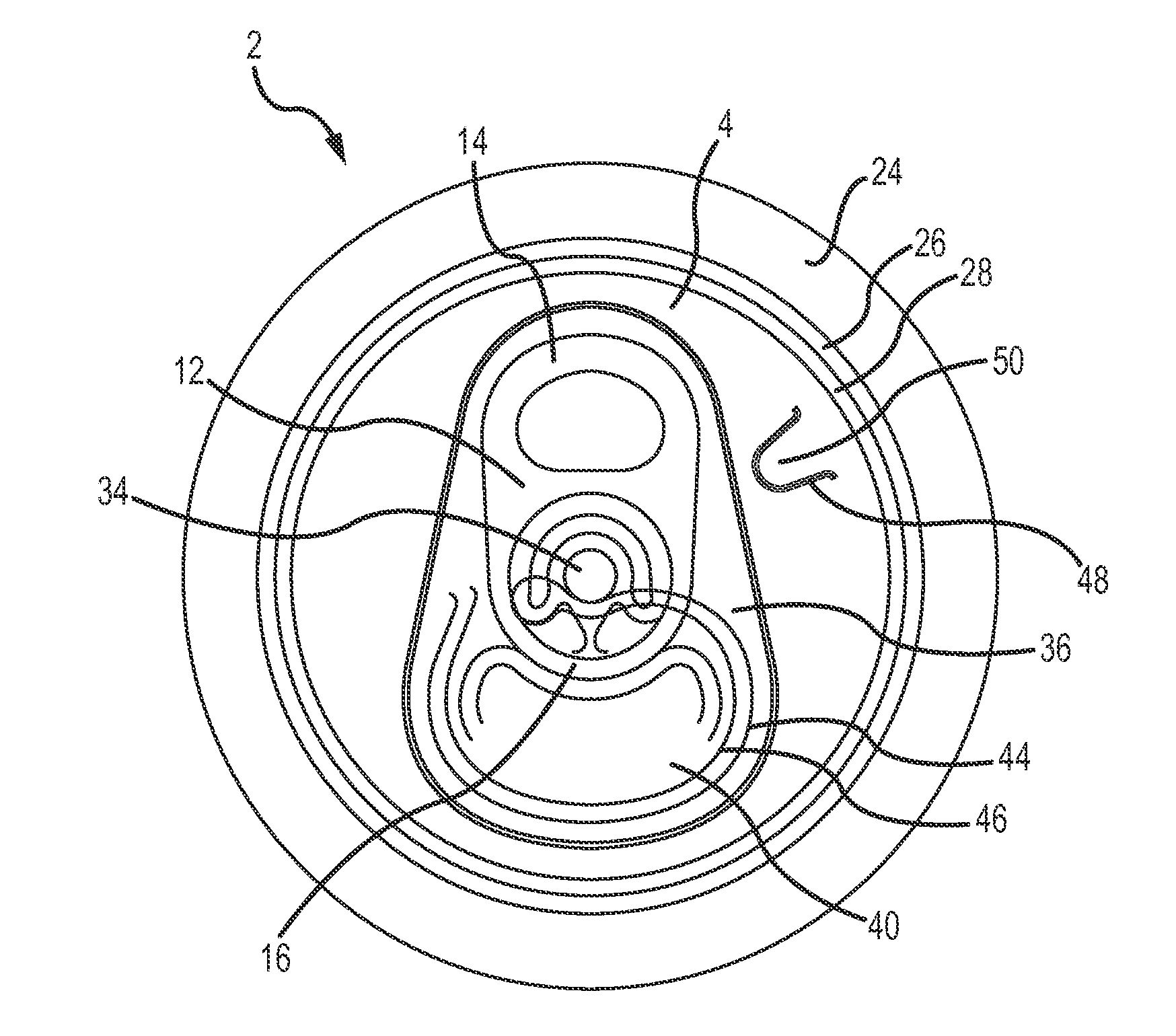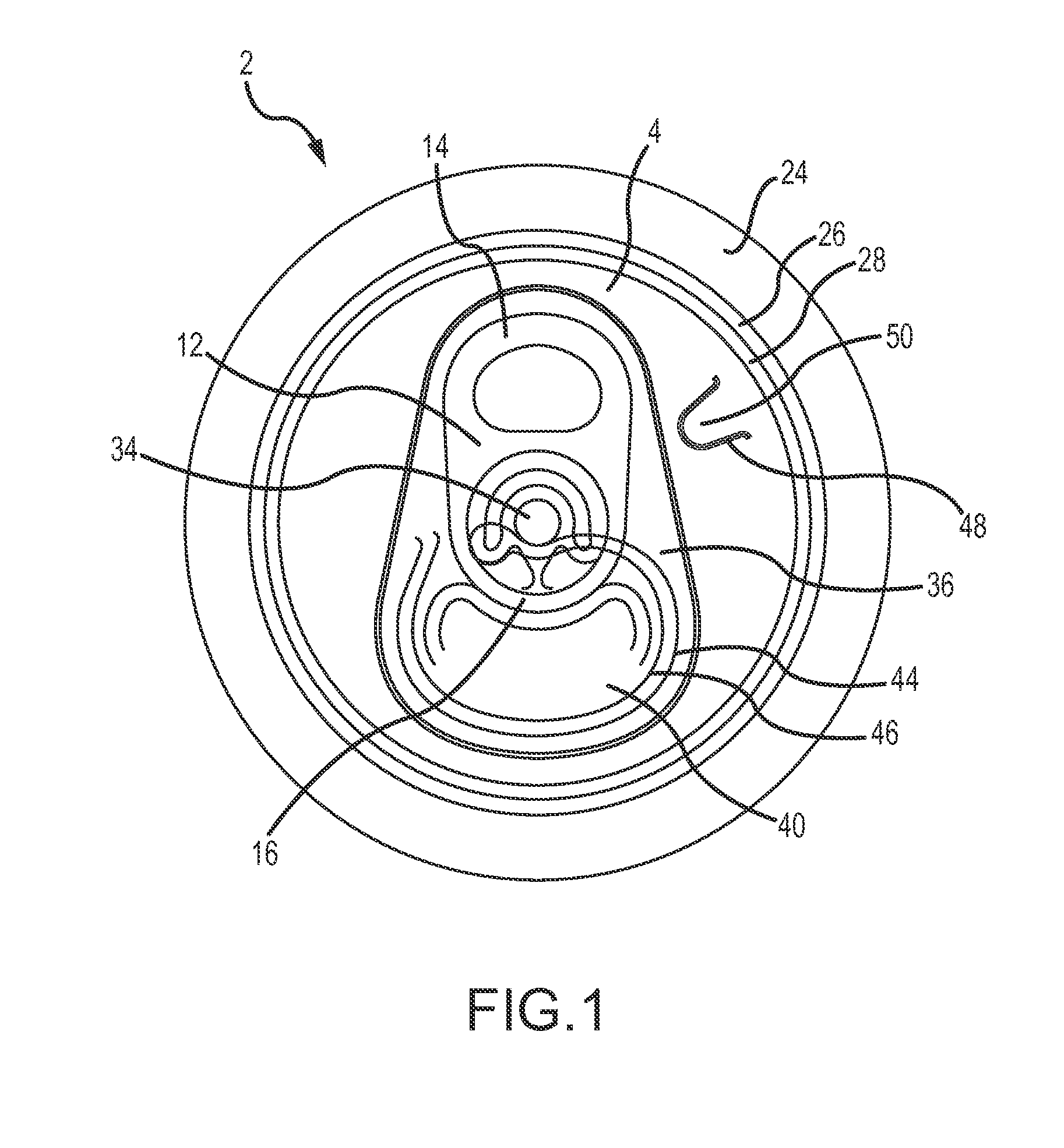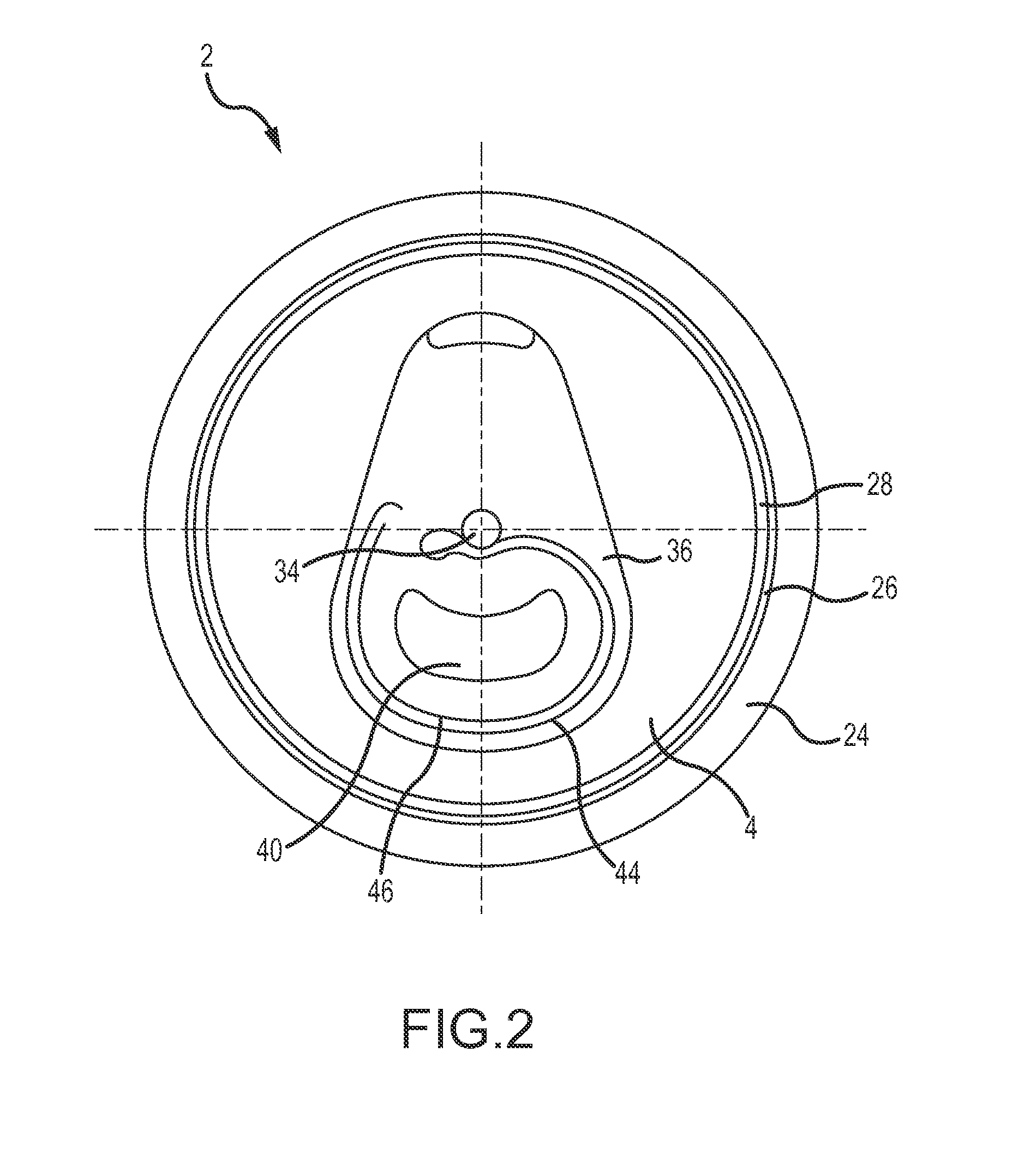Container End Closure with a Score Feature
- Summary
- Abstract
- Description
- Claims
- Application Information
AI Technical Summary
Benefits of technology
Problems solved by technology
Method used
Image
Examples
second embodiment
[0063]FIG. 2 shows the public side of an end closure 2. The end closure 2 is shown without a tab. The end closure 2 comprises a peripheral curl 24 interconnected to a chuck wall 26, which is interconnected on a lower end to a countersink 28. The countersink 28 is interconnected to a center panel 4, which includes a rivet 34, a deboss area 36, and a tear panel 40 defined by a primary score line 44. The tear panel 40 also has a secondary score line 46 that is parallel to the primary score line 44.
[0064]FIGS. 3A-3D show a score line of existing designs. FIG. 3A shows a top plan view of the score line 38 and a load 6 positioned proximate to the score line 38. FIG. 3B a side elevation view of the material with the score before the load 6 is applied near the score. FIG. 3C shows a side elevation view of the material with the score after the load 6 is applied near the score. FIG. 3D shows a sectional view of the material with the score line 38 at cut 3D-3D of FIG. 3A.
[0065]FIG. 4A shows a ...
third embodiment
[0072]FIG. 8A shows a top plan view of the form 30 with a width W1 and defined by a form perimeter 32. In one embodiment, W1 ranges between approximately 0.100 inches and 0.600 inches. In a more preferred embodiment, W1 ranges between approximately 0.150 inches and 0.500 inches. In a most preferred embodiment, W1 ranges between approximately 0.200 inches and 0.400 inches. This form 30 has a focalized area 54 near the center of the form 30, where the features have been sharpened (i.e., smaller radii) to focus the forces and loads into the center of the form 30. The focalized area 54 acts like a stress concentrator to promote permanent deformation of the form 30. When a load is applied to a structure, the load causes the structure to stress. A stress concentrator forces the stress to be higher in a specific, focalized area. By focusing all of the stress to a small area, the small area will fail sooner than it would fail without the concentrated stress. Thus, when a load is applied to ...
fourth embodiment
[0074]FIG. 9 shows the cross-section of a form 30 with a score line 38. This embodiment has a one-sided collapsible form 30 with a non-symmetrical cross-section having a height H1, width W1, and a form area 30. In one embodiment, W1 ranges between approximately 0.100 inches and 0.600 inches. In a more preferred embodiment, W1 ranges between approximately 0.150 inches and 0.500 inches. In a most preferred embodiment, W1 ranges between approximately 0.200 inches and 0.400 inches. In one embodiment, H1 ranges between approximately 0.005 inches and 0.050 inches. In a more preferred embodiment, H1 ranges between approximately 0.010 inches and 0.030 inches. In a most preferred embodiment, H1 ranges between approximately 0.015 inches and 0.025 inches. The form cross-section has one substantially vertical side 60 and a curved side 62. The form 30 also has a score line 38 and two coined areas: a first coined area 58 having a width W2 and a second coined 60 having a width W3. In one embodimen...
PUM
 Login to View More
Login to View More Abstract
Description
Claims
Application Information
 Login to View More
Login to View More - R&D
- Intellectual Property
- Life Sciences
- Materials
- Tech Scout
- Unparalleled Data Quality
- Higher Quality Content
- 60% Fewer Hallucinations
Browse by: Latest US Patents, China's latest patents, Technical Efficacy Thesaurus, Application Domain, Technology Topic, Popular Technical Reports.
© 2025 PatSnap. All rights reserved.Legal|Privacy policy|Modern Slavery Act Transparency Statement|Sitemap|About US| Contact US: help@patsnap.com



